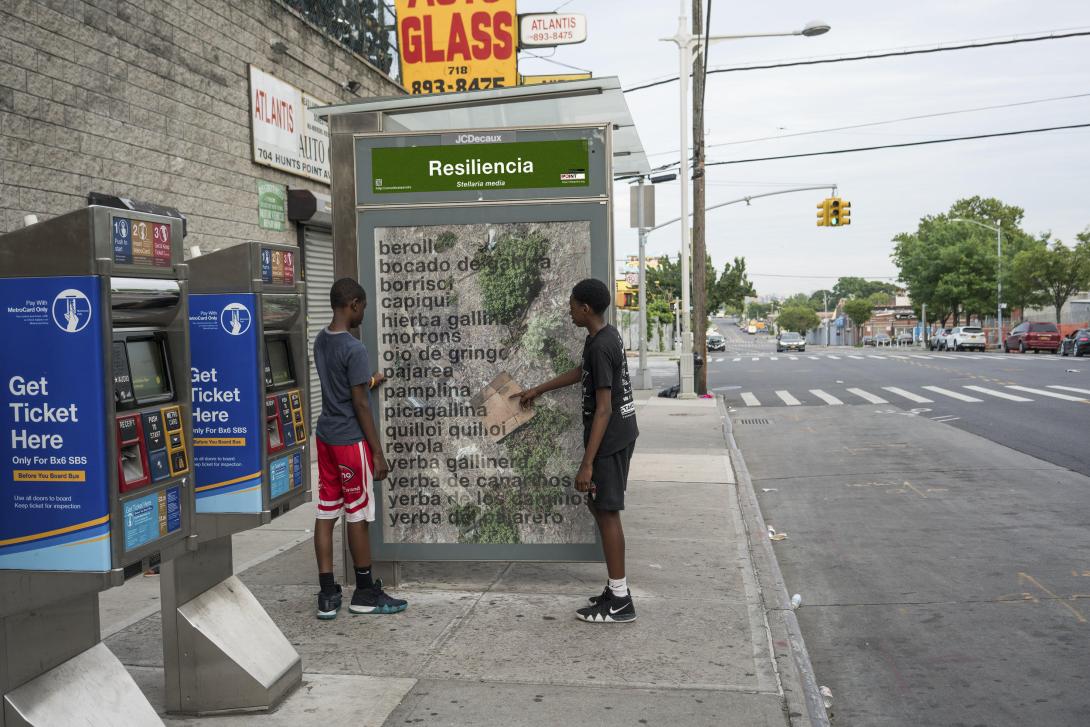CIRCA-IMET Artist-in-Residence Plans for Exhibit
The CIRCA-IMET Artist-in-Residence program is a collaboration between the Center for Innovation, Research, and Creativity in the Arts (CIRCA) at the University of Maryland, Baltimore County, and the Institute of Marine and Environmental Technology (IMET). The goal of this collaboration is to cultivate relationships between artists and scientists. Lynn Cazabon, a Professor of Art at UMBC, was selected as the artist-in-residence for 2020 and has been focusing on the way that IMET’s Aquaculture Research Center (ARC) functions.
“My goal is to create a four-channel video installation that portrays ARC as a cohesive system, including its intricate system of plumbing, the animals that live there, and the people who work there,” Lynn said. Each video will tell part of a story, with images of fish swimming in their tanks, staff preparing food for the fish, scientists conducting their research, and large equipment humming away.
Lynn was inspired by ARC because of the ways in which it functions as a self-contained ecosystem. Water is continuously recirculated, fish grow and reproduce, and fish waste is broken down by microorganisms. In the ocean, these processes would happen without direct involvement of humans, but in ARC, scientists facilitate each step. “What interests me about ARC,” Lynn said, “is that the intermingling of the human and the natural environment is pervasive.”

(Image caption: Lynn Cazabon, Uncultivated, Baltimore, MD, 2011)
In ARC, it is very evident that people are a part of what we commonly think of as natural processes. Lynn’s prior work has shown other less visible ways in which humans are affecting and are affected by larger biological processes. One of her ongoing projects, Uncultivated, focuses on wild plants within urban landscapes, plants that are often called weeds. Many people think of urban environments as separate from nature, but Uncultivated highlights the ways in which nature is a part of our built environment. “I think that making divisions between ourselves and the natural world is harmful, actually,” Lynn said, because it can lead people to not care about the environment around them and act irresponsibly. “So, I try to do anything I can to make people see that.”
In the case of Uncultivated, Lynn showed the connections by documenting urban plants through photography and by identifying the species of plants appearing in the images on the accompanying project website. Plants make their way through cracks in concrete and grates, disrupting human-made landscapes. They are also influenced by human activity. Many species documented in Uncultivated have been spread across the globe by travel and trade and the composition of urban species will evolve in response to human-caused climate change.

(Image Caption: Lynn Cazabon, Uncultivated, Bronx, NY, 2018)
To ensure that many people would see these pieces and see the connections between people and plants in the city, Lynn has realized Uncultivated in 10 cities around the world and displays the images in the public realm. In many cases, she displayed photographs of urban plants on the sides of bus shelters and on billboards, where normally you might see an advertisement for a corporate brand. She also brought people in to think about the urban environment through workshops focused on identifying urban plants, harvesting, cooking, and eating edible species, and using leaves and flowers to create prints on photo-sensitive paper.
As she did in Uncultivated, Lynn hopes to bring the final product of her artist-in-residence into public spaces. Unfortunately, her work at IMET was cut short by IMET’s transition to working from home in March. Still, she has started to think about how to display her videos and is interested in projecting them onto the windows of IMET so they can be seen both from inside and outside. “Windows are architecturally the membrane between the inside and outside,” she said. This relates to the theme of how humans and nature are connected and to connecting the public to what’s happening inside of IMET in ARC.

Starting next September, Lynn will be the director of CIRCA, which partnered with IMET for this artist-in-residence program. She said this program has been a highlight at CIRCA and added, “I’m really interested in creating other opportunities for collaborations between artists and scientists.” While the first two CIRCA-IMET artists-in-residence worked in interactive media and video, CIRCA is not just for visual artists. Spending time in ARC, Lynn noticed the choreography of scientists working in a shared, sometimes slippery, space and the constant low hum of equipment. “I would be curious to see what a dancer might do, or someone in theater, or a musician.” We hope to find out in the spring of 2021, when the next artist from UMBC will start their residency.
You can see more examples of Lynn Cazabon’s work at lynncazabon.com.
This article was first published in the quarterly IMET newsletter, "Inside IMET." Be the first to hear updates from IMET by signing up for our mailing list.